War seems to have been around pretty much since the dawn of humanity. Despite there not being as many people and weapons being far less efficient at killing people death tolls still managed to creep into the millions. But then in those days wars went on for decades, if not centuries.
Since the advent of mechanized and long-range weaponry wholesale slaughter has become much more streamlined and massive casualties can now be racked up in a matter of years. So, it seems that at the end of the day mankind has learnt very little except how to make wars more effective.
To add further insult to the millions have lost their lives to the various wars over the last century it seems in most cases very little was gained and despite all the bloodshed no one really wins.
10. Korean War (1950-1953)
The Korean War is perhaps best known through the 70s TV series M*A*S*H which illustrated the senselessness of war in general but never really touched on the utter brutality of this particular war. Often referred to as the “Forgotten War” the war in Korea never really grabbed the World’s attention, probably because it occurred so close after the global devastation of World War II. Despite this well over a million people were killed during just 3 years of fighting during which time nuclear weapons were primed to go.
The war in Korea was possibly the first skirmish of the Cold War. Prior to World War II Korea had been occupied by Japan but at the end of the war Russia had liberated the north of the country and the Americans had pushed up from the south. As Soviet-US relations soured over the following years it was agreed that Korea be divided into two countries with separate governments, both of whom saw themselves as the legitimate leaders of a unified Korea. The North was a communist state, heavily supported by neighbouring Russia and China, while the South was run by an equally unpleasant dictatorship with the loose backing of the US.
On the 25th June 1950 tensions eventually spilled over and the North Koreans mounted a full scale invasion of the South. Two days later a United Nations backed force led by the US was sent to defend the South. To begin with the UN forces were overwhelmed and pushed back to the very south-eastern tip of the country. However further troops poured in and the situation was turned around with the combined forces of the UN pushing the North Koreans almost back to the Chinese border.
It was at this point that things took a particularly serious turn. Unwilling to have the Americans so close to their border the Chinese sent in a massive force to push back the UN coalition troops. This involved direct fighting between the Chinese and US along with some air cover by the Soviets. Overwhelmed, the UN forces dropped back. It was at this point that the spectre of using nuclear weapons was raised by the Americans. This was raised as a possibility if all out defeat on the Korean peninsula became a reality.
Fortunately this never happened and the was ground to a stalemate around the previous North / South border along the 38th parallel. Bitter fighting continued on the ground with neither side taking territory decisively. Meanwhile, in the air it was a different story. With virtually unrivalled air-superiority the US carried out an massive bombing campaign of the North. More ordnance was dropped than during the War in the Pacific and it is said virtually every building of any significance in the North was flattened. In the end they simply ran out of targets
During this bitter conflict atrocities were carried out by both sides. It is also documented that the US operated a “shoot-first-ask-questions-later” policy where unidentified civilians approaching US battlefield positions would regarded as enemy combatants.
At the end of 3 years of fighting nothing had really changed and the border remained exactly where it was. In the aftermath hundreds of thousands more would die from starvation and in concentration camps in the North. Nearly 70 years on and the conflict simmers on; in fact the war never officially ended.
9. Second Sudanese Civil War (1983-2005)
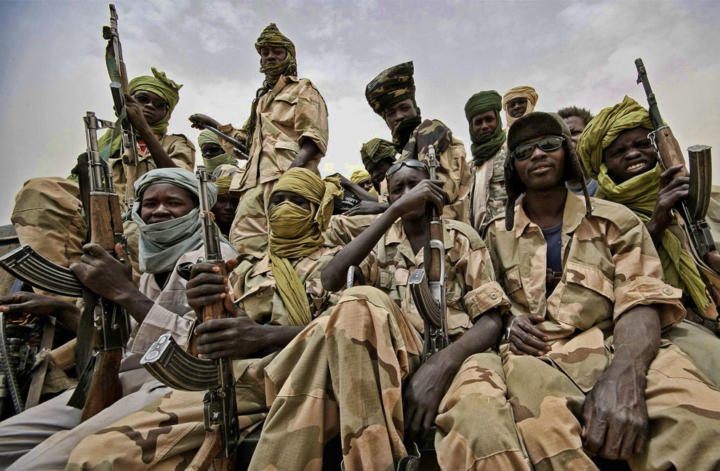
As you can see by the name this is not the first civil war to have ravaged Sudan and just like the first it was long and bloody. Lasting almost 22 years this was one of the longest civil wars ever and as a result the death toll was particularly high. By the end of the war up to 2 million people had been killed, mostly civilians, due to starvation and drought which ripped through the country.
The reason for the civil war is complex and various. Some cite religious divides, others old tribal rivalries and others still put it down to a central government exploiting those in other regions. What seems to have reignited the conflict between Sudan and the semi-autonomous South Sudan was the fundamentalist Islamic Sudanese central government attempting to roll out Sharia law and relinquishing the South’s powers of self-governance.
During the war in Sudan many of the familiar patterns seen in conflict across Africa occurred. Civilians bore the brunt of the killing with atrocities carried out by both sides. Massacres were committed along both ethnic and religious divides with the most notorious of these being the Bor Massacre in which more than 2,000 civilians were killed by South Sudanese rebels. Child soldiers were also used by both sides with nearly 20,000 enlisted by the rebel army alone.
By the end of the Sudanese civil war it wasn’t the fighting that had left well over a million dead, it was the famine that accompanied it. Although the root cause of the famine was drought the effects were massively amplified by the war. Many felt that the Sudanese forces deliberately exacerbated the situation in an act of genocide.
8. War in Afghanistan (1978-)
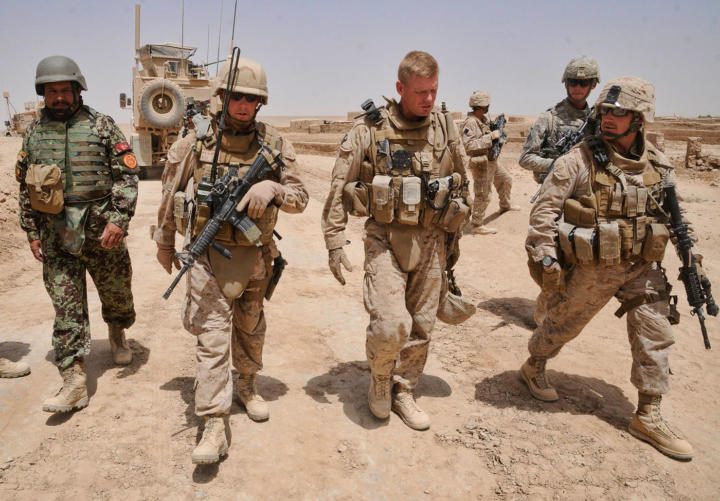
Of all the wars in this article this is the only that has never officially ended. The fact that it has gone on for so long and seems largely unsolvable doesn’t raise any hope that it ever will either.
The problem with Afghanistan is not only does it contain many opposing factions, but that it is bordered by a large number of countries, including regional powers, all of which have been keen to interfere with the nation’s running. There is also a history of imperial meddling from Britain and Russia in particular, which to some extent destabilized the country.
The current conflict in Afghanistan has its roots in the communist military coup of 1978. The pro-Soviet leader was never popular with the masses and was eventually deposed himself. This led to the Soviet invasion of Afghanistan in 1979 – a conflict that soon became known as “Russia’s Vietnam”. It was during the 8 years of this war that most of the casualties occured. Estimates of between 500,000 and 2 million civilian deaths have been made and at the end of the war in 1988 Afghanistan was ranked the 4th poorest country in the world.
Another low point in the Afghanistan conflict, at least for the Afghan people, was in the mid 1990s when the Taliban took control of the country. They took the country back to medieval times imposing their version of strict Islamic laws banning most things, particularly having fun. Punishments ranged from summary beatings and flogging to amputations and public executions by stoning (among other methods).
7. Nigerian Civil War / Biafran War (1967-1970)
The Nigerian Civil War (or Biafran War) is the classic example of the legacy the European colonizers of the 18th and 19th centuries left for Africa. Back then Africa was divided up among the various European empires in a way that suited them. Lines were drawn on the map without consideration for the people living there.
Unfortunately these imposed borders often cut through long-established ethnic, tribal and religious communities, forcing together opposing tribes. While this might not have been a big problem during the iron rule of the Europeans as soon as they left old grievances quickly resurfaced.
Such was the case in Nigeria when it became independent from the British in 1960. The Hausa and the Igbo ethnic groups came from unrelated backgrounds and had different religions. Unable to decide how to share power over Nigeria the mainly christian Igbos in the southeast broke away and formed the country of Biafra. Coincidentally this new country controlled the oil-rich Niger Delta, a factor that probably encouraged both the Nigerian majority and outside interests to take back Biafra.
The fighting was fierce at times with both sides going on the offensive. Atrocities were committed on both sides with perhaps the biggest being towards the end of the war. In order to force the Biafrans to capitulate the Nigerian federals, with the support of the British managed to surround Biafra and impose a total blockade. This led to a humanitarian disaster with famine sweeping the besieged area.
Whether this was an act of genocide by the British and Nigerians is still debatable. By the end of the war in 1970 it is estimated that as many as 2 million people, half of them children, had died of starvation.
6. Vietnam War (1961-1973)
Many movies have been made of World War II and until relatively recently very few of them touched on the grim reality of war. Vietnam on the other hand has been covered by any number of movies and pretty much every one of them has focused on the horror of it all. In previous wars (except maybe Korea) things had been pretty clear cut; we were the good guys going in to save the world from whatever evil was on the march. This was not the case in Vietnam; in fact it wasn’t even obvious to many Americans why they were being forced to fight an unknown enemy thousands of miles from home.
5. Second Congo War (1998-2003)

If the World can have two wars why not Congo?! There was actually barely a year between the two wars and some experts don’t actually regard them as separate at all. What does separate them though is the casualty rate with the Second Congo War eclipsing the first in terms of bloodshed.
Although most commonly referred to as the Congo War this conflict is sometimes referred to as the “African World War”, which should give some idea of the scale. At its height there were nine African countries fighting in the war and any number of armed groups.
The exact causes of the war are complex and link in with the ethnic based genocides in Rwanda. Whilst perhaps not on the same scale, many atrocities took place during this conflict.
The overall death toll from the war in Congo has never really been agreed on. The figure represents the number of people who died during the conflict who would not have died otherwise. This involves both direct and relatively indirect causes such as disease and famine. Regardless of the exact figures it is still likely the Congo war resulted in more deaths than any other conflict since World War II.
4. Russian Civil War (1917-1922)
While the rest of Europe were busy killing each other in the final years of World War I the Russians had resorted to killing each other in what would be Europe’s bloodiest civil war.
The war was to some extent a byproduct of World War I. This had been somewhat of a disaster for Russia both in terms of bloodshed and economically. As things deteriorated frustration and a long standing resentment of the all powerful ruling royal family boiled over. In 1917 a relatively bloodless revolution took place with Tsar Nicholas II being deposed and a provisional government being put in place. Unfortunately, that was only the beginning.
Now, it would be easy to think of the Russian Civil war as a simple two-sided fight between the pro-monarchy ‘White’ and the communist ‘Red’ armies, but that would be a very simplistic view. There were also neutral ‘Green’ armies and the anarchist ‘Black’ army. Thrown into this already complex mix was the intervention of any number of foreign powers from Japan to the countries of Western Europe.
The slippery slope to civil war began with the Bolsheviks, led by Lenin, seizing power from the provisional government. From here on it was more or less everybody against the Bolsheviks, not just the monarchists, but other socialist, left-aligned groups too.
During the early stages of the war the White army took back much of Russia. However, in doing so their brutal tactics did not make them popular. Looting farms, burning towns, torture and execution were commonplace and played very much into the hands of the Bolsheviks.
Under the highly effective leadership of Trotsky the Red army became a formidable force, and their ranks swelled as conscription was introduced. The Reds could be fairly ruthless too and were also masters of propaganda and manipulation. Early in the war they removed any hope of the monarchy being re established by executing the Tsar and his family.
By the end of the Russian Civil War it is was estimated that over 1.5 million fighters had died. But as is always the case the civilian death toll was far higher with as many as 8 million dying either directly from the war or from the famine and disease that followed.
3. Chinese Civil War (1927-1949)
There is a certain logic to the fact that the country with the biggest population also had the most deadly civil war. In that respect the Chinese Civil War does not disappoint. It was also a longer running war than the rest on this list with fighting taking place for around 15 years. There was however a ten year interruption between 1936 and 1945; unfortunately this was because the Japanese invaded swathes of China and there was no let up in the suffering of the Chinese population.
The build up to the civil war was the collapse of the Qing Dynasty in 1911. China was already fairly fragmented and this created something of a power vacuum. Soon after two political parties formed and to begin with things looked quite positive as they worked together to unify China. These were the nationalist Kuomintang Party led by Chiang Kai-shek and the Communist Party (CPC) led by Mao Zedong.
Sadly the honeymoon period didn’t last; internal rivalries bubbled to the surface and Kuomintang went for a power grab. In 1927 the so-called Shanghai massacre took place in which members of the Communist party were rounded up and killed. This is the event that sparked the full-blown civil war and for most of the next the CPC were on the back foot. One of the most famous episodes of this period was the “Long March” in which Mao led his troops on a 7,000 mile retreat across China. Starting with around 80,000 men only 8,000 made it to the end alive.
During World War II the Japanese invasion halted the civil war, but in 1945 things began again with renewed vigour. This time the two sides were backed by the ‘superpowers’ with America supporting the Kuomintang and the Soviets supporting the CPC. After initial gains by the Kuomintang things began to turn around as the CPC gained the support of the population.
Slowly but surely the communists retook the country and finally Beijing. Here they declared victory and set up the People’s Republic of China. The Kuomintang fled to Taiwan where they became the Republic of China. To this day relations between Taiwan and Beijing are somewhat complicated with both sides still claiming to be the righteous government of China.
2. World War I (1914-1918)
“The War to End All Wars” – that’s what they called it. Unfortunately this now famous quote from American president Woodrow Wilson proved to be wildly optimistic. It does however give a sense of just how harrowing this war was and the huge toll it took on both sides.
World War I was triggered by the assassination of Archduke Franz Ferdinand of Austria by a Serbian anarchist. Looking back it seems insane that a war that cost millions of lives could have been caused such an obscure event. However, this appears to have been the final straw as tensions in Europe had been simmering away owing to the lack of a good war for many years.
At this time Europe’s major powers had divided into two pacts; The Triple Entente which consisted of Britain, France, Ireland and Russia, and the Central Powers: Germany, Austria, Hungary, Bulgaria and Turkey. These rival blocs had agreements in place meaning if one was attacked the others would step in to provide defence. And this is what happened when Germany crossed into neutral Belgium on 4th August 1914 en route to attacking France. Shortly after Russia piled in to the East, marching on Prussia.
World War I involved a new kind of warfare involving powerful weapons and machinery. Heavy artillery and tanks wrought carnage along the frontlines and the first chemical weapons were used. In the Battle of the Somme, the biggest of all World War I’s over a million men were killed in horrific trench warfare. 75% of these were killed by artillery shells with many of the remainder being mown down by machine guns whilst on virtual suicide missions to attempt to capture enemy positions. Despite this utter carnage neither side made any gains on the enemy during the 5 months it lasted.
By the end of the war the Central Powers had been beaten into submission at a cost of up to 21 million lives. But no sooner than peace been established that a worse calamity was about to befall the world. The Spanish Flu pandemic of 1918 was the deadliest disease outbreak in history and to a large extent its spread and development have been linked to the war. The increased mobility and poor conditions created by the war are believed to have been major factors.
1. World War II (1939-1945)
Those of you with faith in humanity would have assumed that World War I should have been enough to put mankind from ever trying that again. Unfortunately not. Obviously the fashionable thinking at the time was that there was plenty of unfinished business to be resolved.
Wars are often complex and have many different causes, to some extent this is true of World War II. On the other hand it is one of the few wars in history where there have been such clear cut bad guys. I would have said “vs good guys”, but in the years following WWII the actions of many of these countries hasn’t exactly been exemplary.
Anyway, back to those bad guys, namely Germany and Japan (although there were a few other despicable players on that team). Ever since the end of WWI trouble had been fermenting in Germany. The loss of that war had humbled the German people and brought with it crippling economic problems as Germany paid reparations and rebuilt. Enter Adolf Hitler; he provided a stable, growing economy and a re-invigorated sense of national pride which had been missing for many years. But Hitler’s aspirations didn’t stop here.
Whether the German people turned a blind eye as things were improving or were complicit in Hitler’s master plan are debatable. In a nutshell Hitler wanted to make Germany great again and this involved building an Empire. Starting off with excuses such as defending German-speaking majorities Hitler began invading his neighbours. This went unchecked by the other world powers but a line in the sand was drawn with the invasion of Poland.
What the rest of the world seemed to have missed is Hitler had been building up massive war machine, to some extent in secret. When unleashed this army rapidly steam-rollered through much of Western Europe virtually unchecked. Peaceful countries such as the Netherlands, Belgium and France didn’t known what had hit them – and by the time they did it was too late.
But Hitler was a classic megalomaniac – he didn’t know when to stop. Instead of regrouping and strengthening his grip on the west he decided to double cross Russia, breaking a pact, and invade the motherland. To begin with progress was much like it had been in western Europe – the tanks stormed through Russia taking city after city. However, things were about to take a turn and Hitler was about to learn a lesson, learnt by Europe’s last great megalomaniac, Napoleon.
As winter set in in Russia things ground to a halt and the Russians had time to regroup. It was now that the Germans found out about the almost endless supply of troops the Russians seemed to be able to provide. In addition the factories of Russia went into overdrive, pumping out world class tanks.
In the end the Germans were driven out of Russia but on the way they caused carnage, which was in turn taken out on them by the Russian soldiers. In total over 25 million people from the Soviet bloc were killed during the fighting – over half of whom were civilians.
It was Hitler’s Russian adventure along with America’s decision to join the War that caused his downfall. However, this is probably not the act of evil that Hitler is best remembered for. It was his pathological hatred of the Jews (and several other groups). Whilst the Jews have always provided a convenient scapegoat throughout history the Nazis took this to the next level, declaring a desire to wipe them from the face of the earth. And they had a pretty good go at it. During the Holocaust the Nazis turned murder into an industry with up to 6 million men, women and children exterminated in industrial complexes built specifically for this reason. In addition to the staggering numbers there are plenty of stories of the horrific cruelty inflicted on the inmates of these concentration camps.
Although the Nazis out did themselves in terms of atrocities committed the Japanese weren’t that far behind. Like the Germans, the Japanese were on an empire building mission. They thought it would be easier and cheaper to invade their neighbours than to trade with them to buy the raw materials they could not provide for themselves. Nothing particularly new here but the contempt the Japanese had for the civilians of these countries was almost unimaginable.
The most notorious example of Japanese brutality during World War II occurred in the Chinese city of Nanjing. Before the Japanese army arrived the Chinese army had pulled out leaving behind virtually only civilians. After meeting no resistance the invading Japanese troops went on a 6 week orgy of murder and rape. Estimates put the death rate as up to 300,000. The stories are truly horrific with examples including babies being used for bayonet practice, competitions among troops to see how many civilians they could kill with swords and prisoners being buried alive.
At the end of World War II it is estimated that around 3.5% of the entire global population had perished – in the order of 80 million men, women and children.

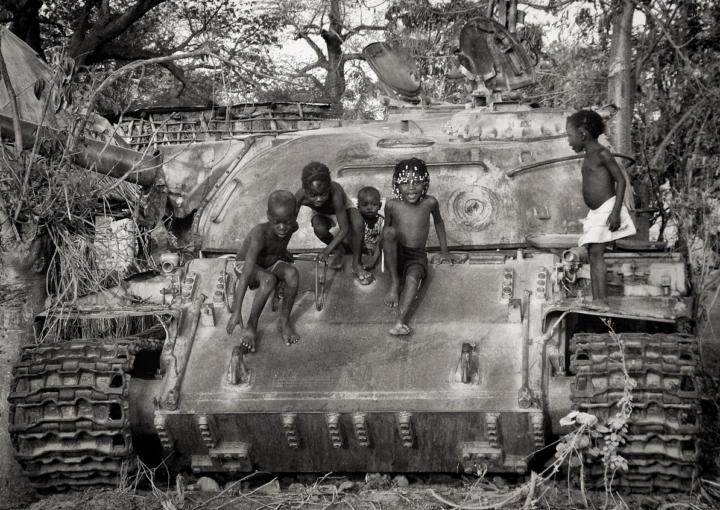

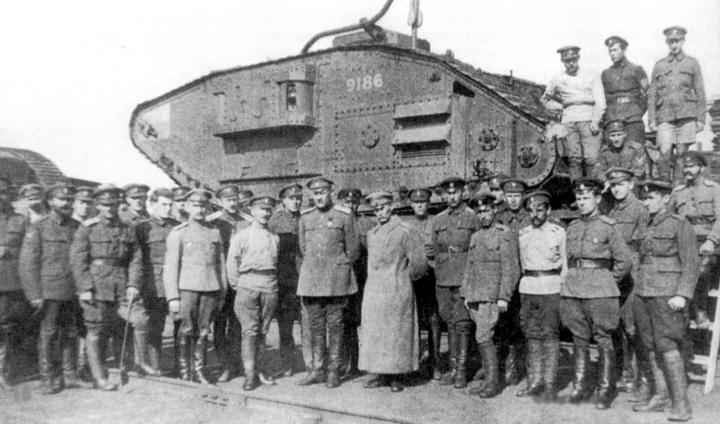


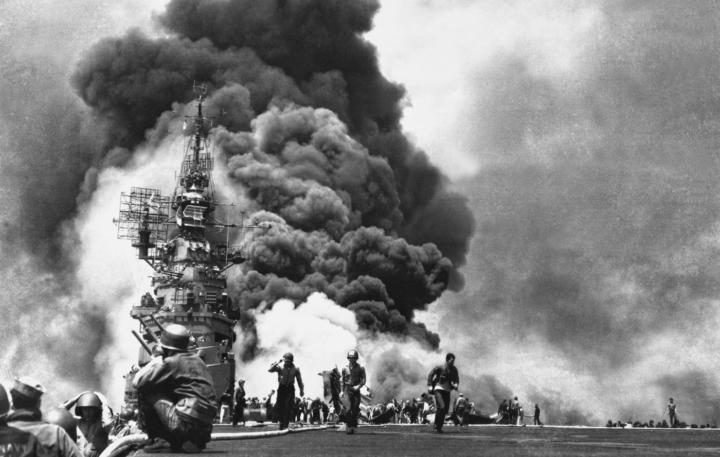
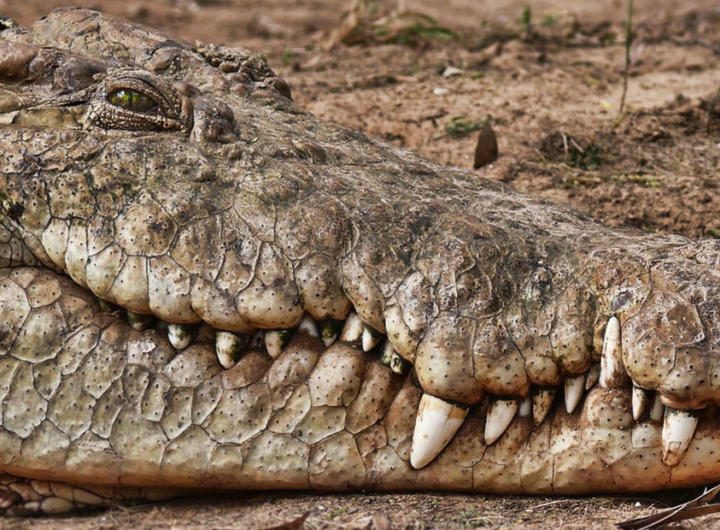


I served in Operation Eagle Pull in April of 1975 which was next to our last mission in Vietnam which was Operation Frequent Wind.We were evacuating key military and civilian personnel from Saigon to the United States.One of my best friends in my squad was killed by a mortar round and I suffered a severe lower back injury from a fall of approx. 20 to 22 feet.No I wasn’t a load on society.When I was Honorably Discharged I went into Apprenticeship Training for Industrial Control Work Electrician with my G.I. Bill and worked till I was 62 at which I retired.
NO,I DON’T KNOW WHY THE THE F%$& WHY MY PLATOON AND I.MUCH LESS MY SQUAD WERE EVEN THERE.Every time I’m in pain in my back it reminds me of the question and the useless loss of my friend.